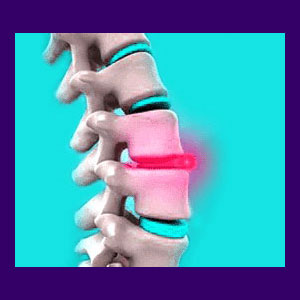
Discitis is an infection of the actual intervertebral disc space in a particular level of the spine. The condition is noted for being seen most often in younger children, typically below the age of 8, although it can occur in virtually anyone and is often seen in the spines of adult intravenous drug users. The nature of the disease makes disc infection difficult to accurately diagnose, frustrating many patients with a drawn out process of diagnostic trial and error in many cases.
Discal infection rarely becomes systemic, but the potential does exist for the bacteria to spread to other areas of the body. If the bacteria infects the actual spinal cord, dire results may occur.
What is Discitis?
Disc infection conditions may be caused by a variety of microorganisms, but the most commonly implicated is staphylococcus aureus.
There is quite a bit of speculation about why disc spaces become infected, with most doctors theorizing that the cartilaginous endplates are the real source in most patients.
Disc space infection can be detected best with MRI studies, although x-rays may be helpful, as may bone scans. In many patients, these infections may go undiagnosed for some time.
The vast majority of affected patients are children who develop the condition for idiopathic reasons. IV drug users and those with compromised immune systems are also at risk. Disc space infection is also possible to suffer as a result of a spinal operation or even after a serious penetrating back injury.
Discal Infection Symptoms
The symptoms of discitis vary, although most sufferers have widespread or localized back pain, particularly upon bending and flexing the spine. Many young children may be hesitant to move or seem overly guarded in their physical expressions.
Systemic infectious symptoms may or may not be present, depending on the nature and source of the contamination. In children, systemic infection is almost unheard of, while in adults, and especially drug users and those with compromised immune functionality, widespread symptoms including fever, nausea, chills and seizures may be present.
People at risk for common spinal infections also often do not seek immediate care for symptoms, increasing the chances of the infection spreading regionally or throughout large areas of the body.
Discitis Treatment
Treatment for disc infection is mostly conservative in nature. Most patients are given antibiotics, while some are placed in restrictive back braces or casts to limit movement of the affected area. In many cases, the body may fight off the infection on its own, while in others, more invasive treatment may be needed, particularly if scar tissue or abscesses form in the region.
Surgery is indicated in very rare cases where the area has to be cleaned out manually. Discitis unto itself will almost never prove fatal, but if and when the infection spreads, the person can be at risk of death, particularly if the target of the bacterial invasion turns out to be the spinal cord, brain or other vital organ.




